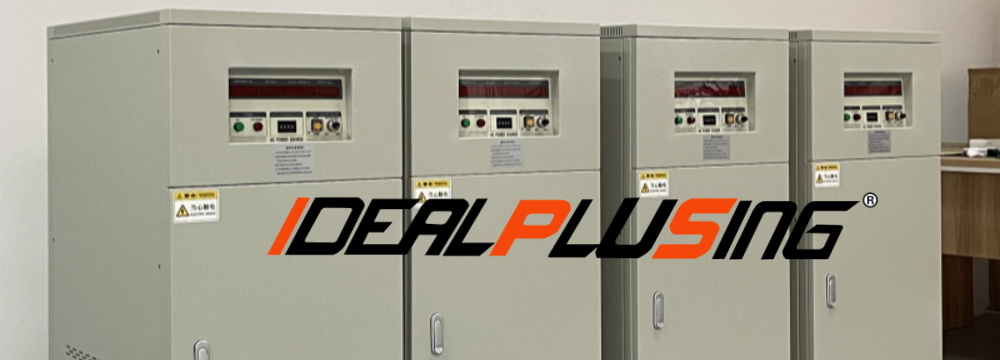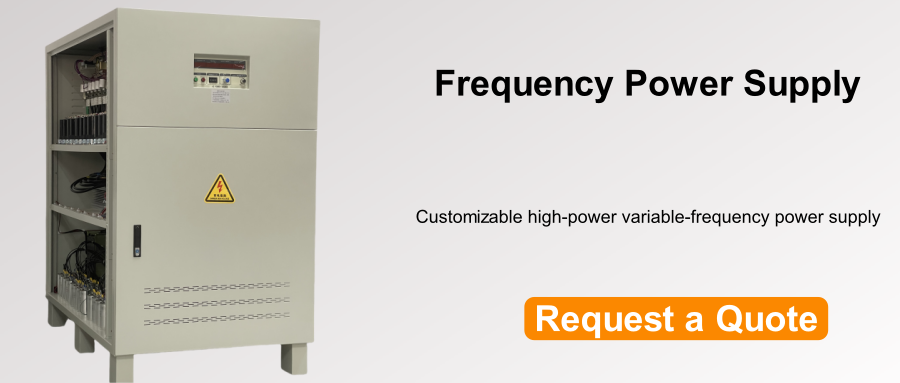Maintenance of variable frequency power supply

Electronic equipment cannot do without reliable Frequency Converter, and AC variable frequency power supply is widely used in almost all electronic equipment with its small size, light weight and high efficiency. This article introduces several common faults in variable frequency power supply, analyzes the causes of the faults, and finally gives some maintenance tips for variable frequency power supply.
Fault of variable frequency power supply 1: Fuse blown
Generally speaking, a blown fuse indicates that there is a problem with the internal circuit of the power supply or the back-end load is too large (surge impact current). Since the Frequency Converters Archives works under high voltage and high current conditions, the fluctuation and surge of the grid voltage will cause the current in the power supply to increase instantly and cause the fuse to blow. The focus should be on checking the rectifier diode, high voltage filter electrolytic capacitor, inverter power switch tube (IGBT) at the input end of the power supply, and check whether these components are broken down, open circuited, damaged, etc.
If the fuse is indeed blown, you should first check the components on the circuit board to see if the surface of these components is burnt or if there is any electrolyte overflow. If the above situation is not found, use a multimeter to measure whether the switch tube is broken down and short-circuited. It is important to note that: when a component is found to be damaged, it is not allowed to be replaced and turned on directly. This is likely to damage the replaced component due to other high-voltage components that are still faulty. It is necessary to conduct a comprehensive inspection and measurement of all high-voltage components in the above circuit to completely eliminate the fault of the fuse.
Fault 2 of Frequency changer : no AC voltage output or unstable voltage output
If the fuse is intact, there is no output of AC voltage at all levels under load. This situation is mainly caused by the following reasons: open circuit and short circuit in the power supply, overvoltage and overcurrent protection circuit failure, auxiliary power supply failure, oscillation circuit failure, power supply overload, rectifier diode breakdown in high-frequency rectifier filter circuit, filter capacitor leakage, etc.
After measuring the secondary components with a multimeter and excluding the breakdown of high-frequency rectifier diodes and load short circuit, if the output is zero at this time, it can be confirmed that the control circuit of the power supply has a fault. If there is partial voltage output, it means that the front-stage circuit is working normally, and the fault is in the high-frequency rectifier filter circuit. The high-frequency filter circuit mainly consists of a rectifier diode and a low-voltage filter capacitor to form a DC voltage output.
The breakdown of the rectifier diode will cause the circuit to have no voltage output, and the leakage of the filter capacitor will cause faults such as unstable output voltage. Use a multimeter to statically measure the corresponding components to check the damaged components.
Frequency conversion power supply fault three: poor power supply load capacity
Poor power supply load capacity is a common fault, which generally occurs in old-fashioned or long-working power supplies. The main reasons are aging of various components, unstable operation of the switch tube, and failure to dissipate heat in time. It should be focused on checking whether the voltage regulator diode is heated and leaking, whether the rectifier diode is damaged, and whether the high-voltage filter capacitor is damaged.
Frequency conversion power supply maintenance
Whether you use a single-phase or high-power three-phase frequency conversion power supply, minor faults cannot be avoided during use. After all, the AC Power Sources is also a machine, and the machine will also be sick. So in order to avoid the frequent occurrence of these minor faults, of course, it is still inseparable from our maintenance and maintenance of it. Therefore, the frequency conversion power supply needs to be regularly maintained after a long period of use.
1. Clean the air filter, cooling duct and internal dust regularly.
2. Check regularly whether screws, bolts and other plug-ins are loose.
3. Wipe the conductor and insulator with alcohol in time.
4. Check whether the UVW phase waveform is a sine wave.
5. Measure whether the square wave of each waveform of the drive circuit is distorted.








